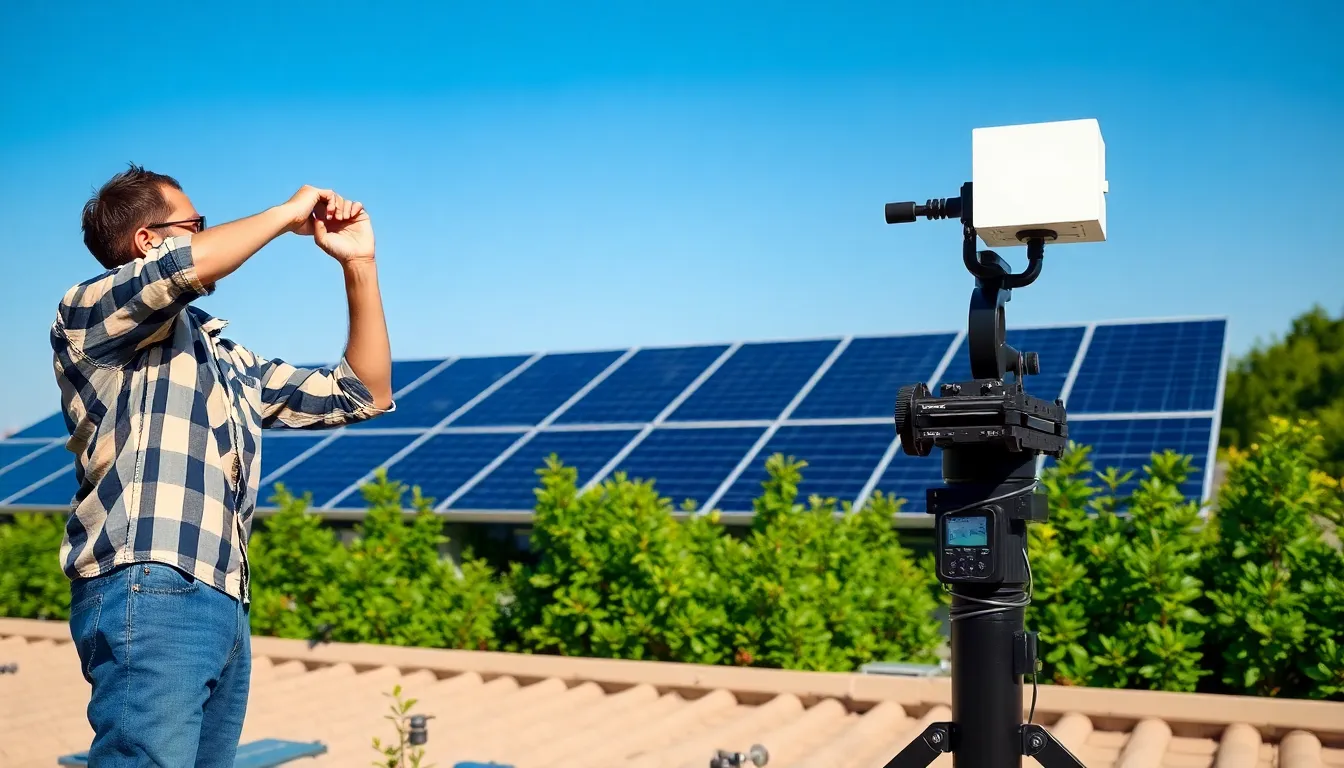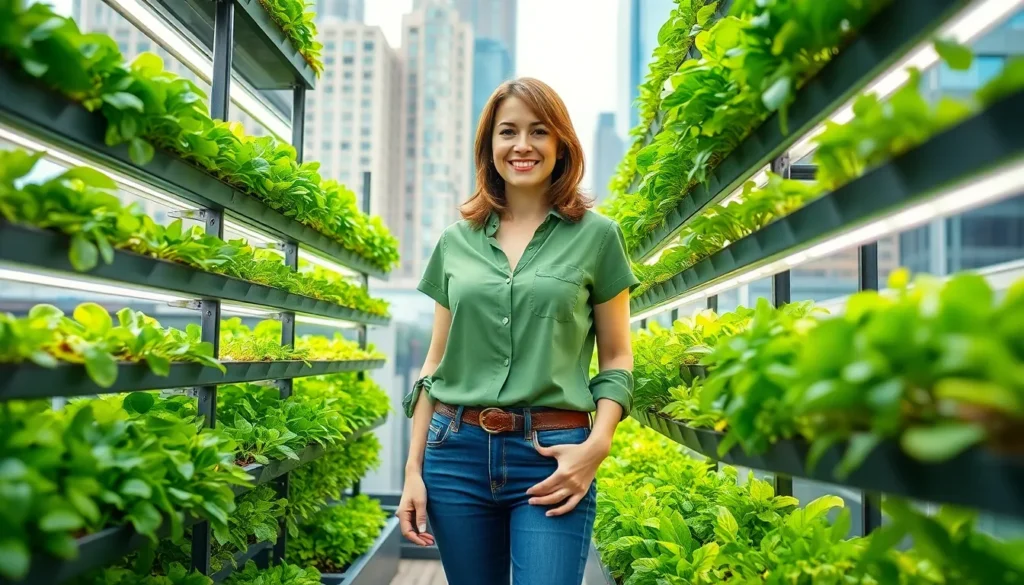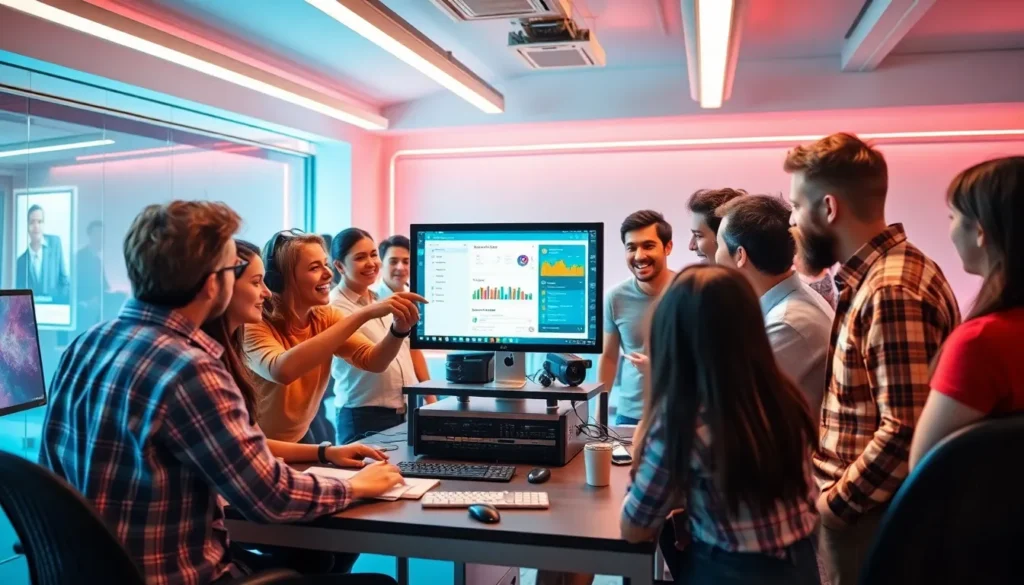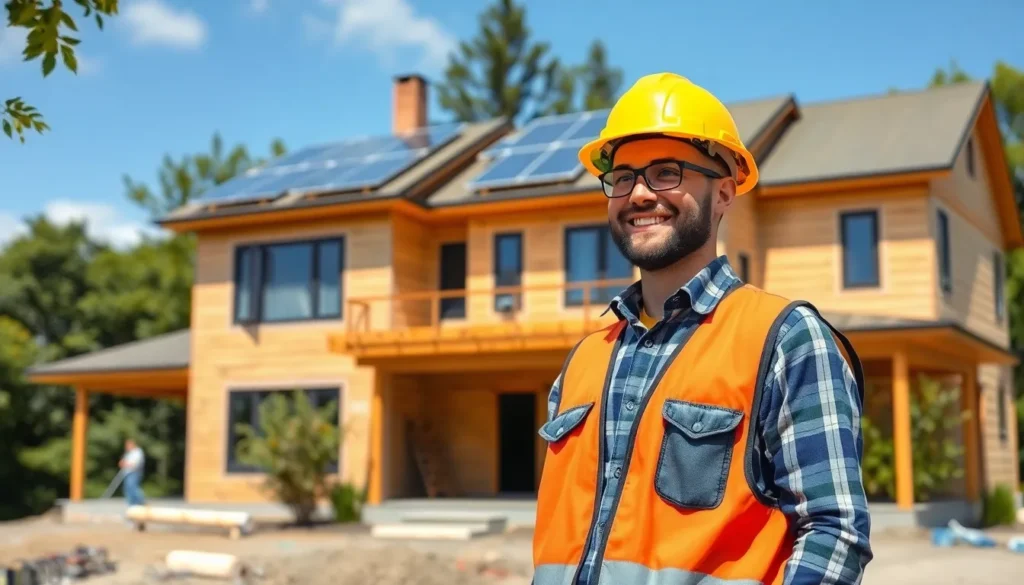Table of Contents
ToggleIn a world where the planet’s health hangs in the balance, sustainable living innovations are stepping up like superheroes in eco-friendly capes. From solar-powered gadgets to waste-reducing hacks, these clever solutions are not just saving the Earth; they’re making life a whole lot easier—and maybe even a bit more fun!
Overview of Sustainable Living Innovations
Sustainable living innovations focus on environmentally friendly solutions that help reduce the negative impact on the planet. Innovations in areas like energy, waste management, and transportation have gained momentum.
Energy Solutions
Solar power systems serve as a prime example. They harness sunlight to generate electricity, significantly lowering utility costs. Wind turbines, another innovative technology, utilize wind energy to provide clean power. Both options promote energy independence and reliability.
Water Conservation
Smart irrigation systems utilize sensors to monitor soil moisture. These systems ensure optimal water use, reducing water waste by up to 50%. Rainwater harvesting systems collect and store rainwater, allowing households to engage in sustainable gardening practices.
Waste Reduction
Zero waste initiatives emphasize minimizing landfill contributions. Products designed for durability and reusability, like stainless steel straws and beeswax wraps, represent effective waste-reducing solutions. Compost bins transform food scraps into nutrient-rich soil, supporting urban gardening.
Sustainable Transportation
Electric vehicles (EVs) operate on clean energy, offering an alternative to fossil fuel-powered cars. Charging stations for EVs are expanding, promoting more sustainable travel. Public transportation options, such as hybrid buses and bike-sharing programs, encourage environmentally friendly commuting.
Green Building Practices
Eco-friendly construction materials, like bamboo and recycled steel, support sustainable architecture. Green roofs provide insulation and mitigate urban heat, enhancing building efficiency. Energy-efficient appliances minimize power consumption in homes.
Sustainable living innovations increase accessibility to eco-friendly practices, providing individuals and communities with tools to reduce their ecological footprint. Such advancements contribute not only to environmental protection but also to improved quality of life for all.
Renewable Energy Solutions

Renewable energy solutions play a crucial role in promoting sustainable living. These innovations harness natural resources, reduce carbon emissions, and enhance energy efficiency.
Solar Energy Advances
Solar energy advances include innovations like bifacial solar panels and solar tracking systems. Bifacial panels capture sunlight from both sides, increasing energy output by up to 30%. Solar tracking systems adjust the panel’s angle to follow the sun, boosting energy efficiency by 25%. Additionally, building-integrated photovoltaics (BIPV) allow solar technology to be incorporated into building materials, blending aesthetics with functionality. These advancements make solar power more accessible and effective, further driving its adoption across residential and commercial sectors.
Wind Energy Technologies
Wind energy technologies include horizontal and vertical-axis wind turbines. Horizontal-axis turbines dominate the market, providing 80% of global wind energy capacity due to their efficiency and scalability. Vertical-axis turbines offer advantages in urban settings where space is limited, generating energy even at lower wind speeds. Innovations like floating wind farms enable offshore wind power generation, expanding installation opportunities. These technologies enhance energy production capacity and support grid stability, making wind energy a vital component of sustainable living.
Sustainable Materials and Products
Sustainable materials and products play a key role in reducing ecological impact. Innovations in this area limit waste and promote a healthier planet.
Biodegradable Materials
Biodegradable materials break down naturally, minimizing pollution. Common examples include plant-based plastics like polylactic acid (PLA) and mycelium from mushrooms. Many companies now produce packaging and utensils from biodegradable materials, ensuring less landfill accumulation. These materials decompose within months or years, contrasting with traditional plastics that persist for centuries. Brands integrating biodegradable options significantly contribute to waste reduction and resource conservation.
Upcycled Products
Upcycled products transform waste into valuable items, showcasing creativity and sustainability. Popular examples involve turning old glass into new tableware or repurposing denim into bags. Numerous brands specialize in upcycled goods, offering unique aspects that resonate with eco-conscious consumers. Upcycling enhances resource efficiency, reducing demand for new materials and encouraging a circular economy. By choosing upcycled products, consumers support environmental initiatives while acquiring distinctive, high-quality items.
Water Conservation Innovations
Water conservation plays a vital role in sustainable living. Several innovations enhance water efficiency while promoting ecological health.
Rainwater Harvesting Systems
Rainwater harvesting systems gather and store rainwater for later use. These systems consist of catchment surfaces, storage tanks, and filtration units. By using rainwater for irrigation, toilet flushing, and other non-potable purposes, households can reduce reliance on municipal water supplies. In areas with limited rainfall, installations can provide valuable water resources, improving resilience against drought. According to the U.S. Environmental Protection Agency (EPA), a well-designed rainwater harvesting system can save a household around 40,000 gallons of water annually.
Smart Irrigation Techniques
Smart irrigation techniques optimize water usage in agriculture and landscaping. These methods utilize sensors, weather data, and automated controls to deliver precise amounts of water. Drip irrigation systems, for instance, apply water directly to the plant’s root zone, minimizing evaporation and runoff. Smart controllers adjust watering schedules based on real-time weather conditions, reducing water waste. Research indicates that employing smart irrigation can conserve up to 50% of water in traditional irrigation practices, significantly enhancing water efficiency and supporting sustainable agriculture.
Urban Agriculture Trends
Urban agriculture trends leverage innovative practices that optimize food production in limited spaces. These advancements address food security while enhancing urban sustainability.
Vertical Farming Solutions
Vertical farming employs stacked layers of crops, maximizing space in urban environments. It utilizes LED lighting, automated systems, and controlled climate conditions to grow plants efficiently. The method reduces land use and transportation emissions since food can be produced closer to consumers. Research shows that vertical farming can yield up to 10 times more produce per square foot compared to traditional methods, highlighting its potential to revolutionize urban food systems.
Hydroponics and Aquaponics
Hydroponics and aquaponics offer efficient methods for growing food without soil. Hydroponics uses nutrient-rich water solutions to nourish plants, optimizing growth cycles and resource use. Aquaponics integrates fish farming with plant cultivation, creating a symbiotic environment. This system recycles waste produced by fish, providing nutrients for plants while purifying water for the fish. Both methods significantly reduce water usage—up to 90% less than conventional agriculture—making them ideal for urban settings facing water scarcity.
Sustainable living innovations are paving the way for a greener future. By embracing technologies that harness renewable energy and promote efficient resource use, individuals and communities can significantly reduce their ecological footprints. The advancements in water conservation and urban agriculture not only enhance sustainability but also improve resilience against environmental challenges.
As these innovations continue to evolve, they offer practical solutions that make sustainable living more accessible and effective. The commitment to integrating eco-friendly practices into daily life can lead to a healthier planet and a better quality of life for everyone. Embracing these changes is not just a trend; it’s a necessary step towards a sustainable future.







